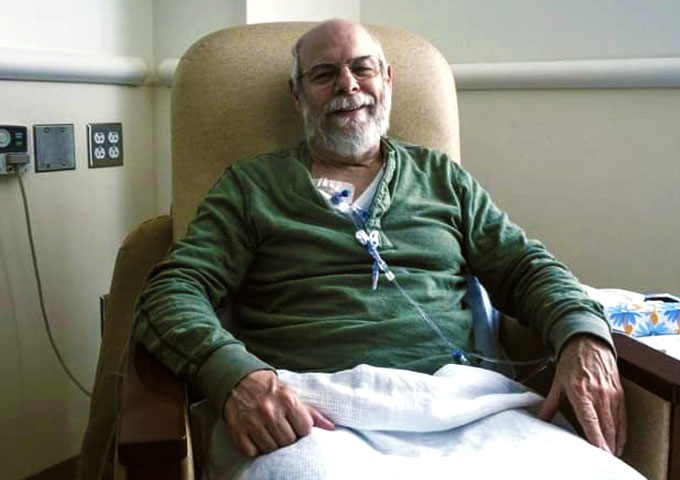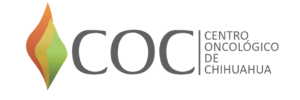Chemotherapy
Chihuahua Oncology Center has positioned itself as a leader in care and success stories through Chemotherapy in different types of cancer.
Our multidisciplinary approach to care is based on a prestigious and experienced medical and nursing staff, as well as on the different disciplines that minimize side effects, and of course on evidence-based medicine through international clinical guidelines.
Chemotherapy works by stopping or slowing the growth of cancer cells, which grow and divide rapidly. Chemotherapy is used to cure cancer, as well as to minimize the chances of it coming back, or failing that, to stop its progression or slow its growth, but also to shrink tumors that cause pain and other problems.
Treatment with chemotherapy.
Chemotherapy consists of the use of drugs for the treatment of cancer, its effect is known as systemic since it is at the level of the whole body, unlike radiotherapy and surgery that only serve to treat a specific part of the body.
There are more than 100 chemotherapy drugs which can be used as a single drug or in combinations, in addition there are drugs that are used for different types of tumors. When chemotherapy is used before surgery it is known as neoadjuvant therapy, if it is used after surgery it is called adjuvant.Before receiving chemotherapy, it is important to communicate with your doctor to understand what the goals of your treatment are, how it will be administered, duration, side effects; If in the first consultation there are doubts, it is important that you calmly write down the doubts that you want your doctor to explain to you at home.

At Chihuahua Oncology Center we also have a department of nutrition and psychology.
It is important that you do not go alone to your consultations so that there is always another person who assists you and agrees with the doctor’s information.
The type of chemotherapy that is used is according to the type of tumor that is treated and therefore its duration and frequency varies according to the type of cancer. Hence, the side effects will be different according to the type of treatment used. Before starting your treatment you must sign a document known as informed consent, this confirms that you agree, understand and accept the benefits and risks of your treatment.
In addition to the oral and intravenous routes, chemotherapy can be administered intrathecally, that is, injected into the fluid-filled space between the thin layers of tissue that cover the brain and spinal cord so that the drug circulates to the brain level. and spinal cord.
• Intra-arterial route:
When the drug is injected into a single part of the body, such as the liver, arm, or leg, it is called regional chemotherapy.
• Intracavitary route
A catheter is used that is placed in the abdominal cavity, it is also known as intraperitoneal chemotherapy or in the thoracic cavity.
• Intramuscular route:
It is applied like any injection.
• Intralesional route:
Injected directly into the skin tumor under the skin or an internal organ.
• Topical route
Directly on the lesion in the form of a cream, jelly or ointment.
It is important to say that chemotherapy does not cause pain whether it is applied through a vein or a catheter. If there is pain or irritation during the application itself, the nurse should be notified immediately.
Before the application of your chemotherapy, the doctor usually asks for blood tests such as a complete blood count, blood chemistry and liver profile to ensure that you are in a condition to receive your treatment.
It is important that if you are going to take any medication not prescribed by your oncologist, notify him to ensure that it does not interfere with your treatment, this is also valid for alternative treatments.
Your oncologist will tell you what type of imaging studies are necessary to assess the evolution and response to your treatment.
Safety measures during chemotherapy treatment.
It is important to remember that chemotherapy can lower your defense system to fight infections, so it is not recommended that you visit sick people or that you receive visitors.
You should wash your hands before touching your nose, mouth, and eyes, and ask your family members to do the same when they are with you. Generally, most medications are processed by your body or eliminated within 48 hours.
Most are eliminated through urine, feces, tears, or vomit. When they are eliminated, they can irritate your skin, so be careful with toilets, which can be a danger to children or your pets.
It is recommended to flush the toilet 2 times and lower the lid to avoid splashing, both men and women should sit on the toilet to avoid splashing, wash their hands after going to the bathroom and dry with paper towels and dispose of them in the trash can.
In case of vomit in the toilet, clean the splashes or if vomit is emptied from a container into the toilet flush twice, the container where the vomit was emptied should be washed with soap and water and dried with paper towels and disposed of in The trash.
Every person who is caring for the patient should use disposable gloves when in contact with secretions and wash their hands before and after being in contact with the patient. Clothes or sheets that have bodily fluids should be washed in a washing machine and not by hand and do not wash together with other clothes. Disposable diapers, adult underwear place them in a double plastic bag, close the bag and throw it away.
Something that worries the patient is whether he can work, this will depend on the side effects of the drugs, his tolerance to them and the type of work to be done, so the doctor and the patient must make the decision as to whether it is convenient for work. A large proportion of patients are able to work

Most common side effects of chemotherapy..
Just as cancer cells are affected, normal cells with growth capacity are also affected; These would be those of the bone marrow (red blood cells, white blood cells, platelets) for which it could be susceptible to anemia, infections and bleeding depending on the severity.
You should contact your doctor in case of fever, nosebleeds, gums or other types. Cells lining the mouth and digestive tract are also affected, which can cause ulcers and pain. The reproductive system can be affected in patients who still have menstruation, during treatment it is common for them to stop menstruating.
And finally, the hair follicles are affected, which causes hair loss (this will be temporary, as soon as the treatment is finished, the hair will grow back). Some side effects disappear days after finishing your treatment, others last for months or years, and others are permanent; This will depend on the type of medication applied, so it is necessary to discuss it with your doctor.
The Chihuahua Oncology Center has positioned itself as a leader in care and success stories through Chemotherapy in different types of cancer.
Our multidisciplinary approach to care is based on a prestigious and experienced medical and nursing staff, as well as on the different disciplines that minimize side effects, and of course on evidence-based medicine through international clinical guidelines.

